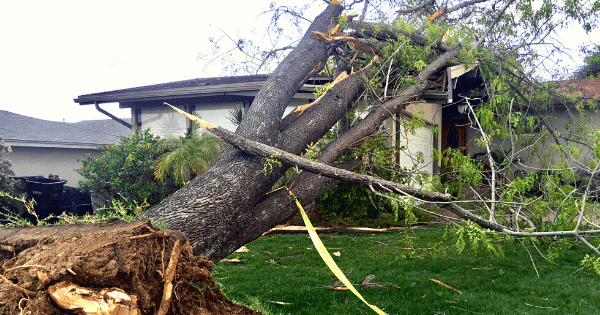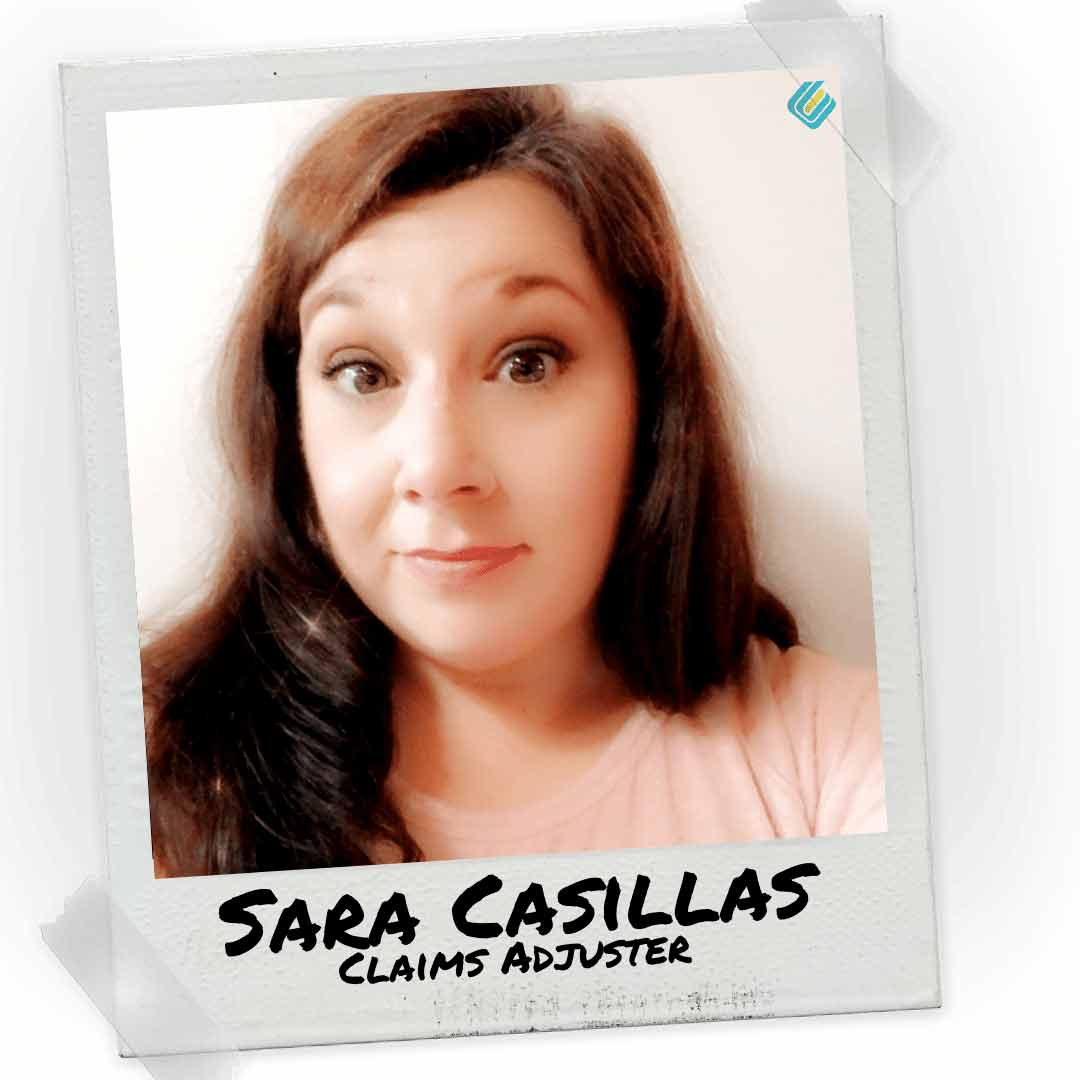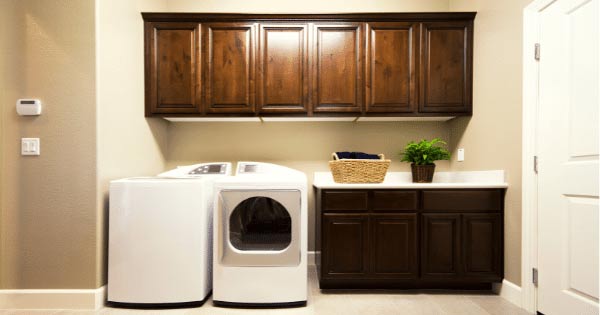
by California Casualty | Auto Insurance Info, Safety |
Teenagers and vehicles can be a deadly combination. Motor vehicle accidents are the leading cause of death in teens ages 15-20 in the United States.
It’s a terrifying thought that as a parent you can’t always be there to keep them safe when they are behind the wheel. Give yourself peace of mind by taking steps to educate your teen and give them the proper tools they need before they take off on their own.
This includes taking driver’s safety or education courses, practicing in all driving conditions, knowing what to do in an emergency, talking about the dangers of distracted driving; and most importantly doing your research and purchasing (or letting them purchase) a safe and reliable vehicle.
Now, we know looking for a new car can be stressful, especially with your teen who probably wants new-new and not new-to-them, so we’ve done the research for you.
Here are the best vehicles for teens in 2021 according to IIHS and Consumer Reports.
| Small cars |
Model years |
Price |
| Mazda 3 sedan or hatchback |
2014 or newer; built after October 2013 |
$8,100 |
| Toyota Prius |
2014 or newer; built after November 2013 |
$8,600 |
| Hyundai Elantra GT |
2018 or newer |
$15,200 |
| Subaru Crosstrek |
2017 or newer |
$17,900 |
| Honda Insight |
2019 or newer |
$18,200 |
| Toyota Prius Prime |
2017 or newer |
$18,200 |
| Toyota Corolla hatchback |
2019 or newer |
$18,300 |
| Kia Niro |
2019 |
$18,600 |
| Subaru Impreza sedan and wagon |
2019 |
$19,400 |
| Midsize cars |
Model years |
Price |
| Subaru Outback |
2013 or newer; built after August 2012 |
$8,700 |
| Subaru Legacy |
2013 or newer; built after August 2012 |
$8,800 |
| Mazda 6 |
2014 or newer |
$10,100 |
| Lincoln MKZ |
2013, 2016, 2018 or newer |
$10,300 |
| Honda Accord sedan or coupe |
2013 or newer |
$10,900 |
| Volkswagen Passat |
2016-17 |
$11,400 |
| Toyota Prius v |
2015-18 |
$11,600 |
| Volkswagen Jetta |
2017 |
$12,900 |
| Volvo S60 |
2016, 18 |
$14,100 |
| BMW 3 series |
2017 or newer; built after November 2016; 4-cylinder only |
$17,900 |
| Large cars |
Model years |
Price |
| Ford Taurus |
2014 |
$9,600 |
| Hyundai Genesis |
2016 |
$18,700 |
| Small SUVs |
Model years |
Price |
| Mazda CX-5 |
2014 or newer; built after October 2013 |
$9,300 |
| Nissan Rogue |
2014, 2016-18, 2020 |
$10,100 |
| Subaru Forester |
2016 or newer |
$13,500 |
| Honda CR-V |
2015 or newer |
$14,800 |
| Kia Sportage |
2017, 2018, 2020 |
$14,800 |
| Toyota RAV4 |
2015 or newer; built after November 2014 |
$14,900 |
| Honda HR-V |
2017 or newer; built after March 2016 |
$15,400 |
| Hyundai Kona |
2018 or newer |
$15,800 |
| Buick Encore |
2018-19 |
$16,300 |
| Hyundai Tucson |
2018 or newer |
$16,800 |
| Mazda CX-3 |
2019 or newer |
$17,800 |
| Volvo XC60 |
2017 |
$19,200 |
| Midsize SUVs |
Model years |
Price |
| Chevrolet Equinox |
2017, 2019 |
$13,700 |
| Nissan Murano |
2015 or newer |
$14,800 |
| GMC Terrain |
2017, 2019 |
$15,100 |
| Lexus NX |
2015-16, 2018 or newer |
$16,000 |
| Kia Sorento |
2017-18 |
$16,500 |
| Hyundai Santa Fe |
2017-19; built after March 2016 |
$18,700 |
| Ford Edge |
2018 or newer |
$19,600 |
| Mazda CX-9 |
2017 or newer; built after November 2016 |
$19,600 |
| Audi Q5 |
2016-19 |
$19,800 |
| Minivans |
Model years |
Price |
| Toyota Sienna |
2015-16 |
$13,900 |
| Honda Odyssey |
2016 |
$15,400 |
| Kia Sedona |
2017 |
$15,600 |
Remember, when looking at vehicles talk to your insurance agent to see what will save you the most with your teen on your policy. And don’t forget to look out for recalls or damage from previous owners.
This article is furnished by California Casualty, providing auto and home insurance to educators, law enforcement officers, firefighters, and nurses. California Casualty does not own the data table show above. Get a quote at 1.866.704.8614 or www.calcas.com.

by California Casualty | Homeowners Insurance Info |
When storms and high winds take down trees, it can be frightening. If you’re not covered for the damage- the bill can be pretty scary, too.
If a tree fell on your home tomorrow, would you be covered by your insurance policy? Whether or not a fallen tree is covered depends on what caused the tree to fall and where it fell. Here’s everything that you need to know.
If a healthy tree falls on your home…
Strong winds can cause even healthy trees to fall. When a tree hits your house, your garage, your deck, your shed, or your fence, your homeowner’s policy usually covers the costs of repair. That also includes the cost of tree removal. Of course, you have to first pay your deductible. Check your property contract to see what is covered. There may be a cap – a maximum paid per tree. Finally, an annual policy review is a good time to review your coverages, before anything happens.
If an unhealthy tree falls on your home…
It’s a little different with diseased or dying trees. They’re more likely to fall—with or without a storm. As a homeowner, your responsibility is to check the trees on your property, trim the branches, and make sure the trees are healthy. If a diseased or dying tree falls on your home as a result of a severe storm or high winds, your policy most likely will not cover it.
If a tree falls but does not hit your home…
If a tree falls and doesn’t damage anything, that’s great (and lucky) news! However, a downed tree is considered a hazard and you are still responsible for removing it from your property. Unfortunately, in this case, your homeowner’s insurance does not cover that tree removal. The only exception is if the fallen tree is blocking a driveway or a ramp for someone who is handicapped. But proceed with caution – before you remove the tree, check with your local regulations. There are laws that govern tree removal in some states, and you may need a permit.
If your neighbor’s tree falls on your home…
It’s not uncommon for a tree in your next-door neighbor’s yard to fall on your home. If it’s a healthy tree that got knocked over in a storm, your policy will likely pay for damages just as if the tree fell from your own property. However, in this case, your insurer may go through your neighbor’s insurance provider for payment, and if that’s what happens, you will be reimbursed for your deductible. One word of warning: If a tree falls because your neighbor cut it down incorrectly, that’s on him to pay for damage and tree removal. Insurance does not cover that.
If a tree falls on your car…
It makes sense if you think about it. Homeowners’ policies do not cover trees that fall on cars. Car insurance policies do—but only those policies with comprehensive coverage. Check to make sure that you have comprehensive coverage so that you will be covered in the event of a fallen tree.
What To Do If A Tree Falls
-
- Assess the damage. Be careful and watch for fallen power lines as you do so.
- Determine who may be liable for the damage.
- Contact your insurance company if you believe you have a claim or if you are unsure.
- If you have a claim, make sure not to move anything until you have spoken with your agent. Take and submit photos or videos of the damage from all angles. Your insurer will guide you through the process.
- If you do not have a claim, you may still be responsible for removing a tree. Before contracting with a tree removal service, ask for proof of insurance. The company will then be responsible for any further damage they may cause.
Avoid a Disaster By Keeping Your Trees Healthy
-
- Water your trees regularly but don’t overwater. Consult a garden reference to determine how much water your species needs.
- Add mulch around the base of your trees. This will help protect the roots from weather conditions. It also will keep your mowers from bumping into the roots or the trunk.
- Visually inspect your trees for signs of disease. Look for discoloration and stunted growth or signs of pests. Mushrooms growing at your tree’s roots also can indicate decay.
- Remove any dead branches or large limbs that look like a liability. Prune your trees during the winter months.
- If you are removing a tree- be careful where you dig, as root systems of large trees can extend two to three times farther than the branches.
This article is furnished by California Casualty, providing auto and home insurance to educators, law enforcement officers, firefighters, and nurses. Get a quote at 1.866.704.8614 or www.calcas.com.
by California Casualty | News |
We have amazing employees at California Casualty. The New Employee Spotlight is a series aiming to highlight the talented individuals that are brand new to our team. Please help us give them a warm welcome!
Today we’re spotlighting New Claims Adjuster: Sara Casillas
Let’s get to know Sara!

What California Casualty office do you work in?
Arizona
Where are you from?
Originally from Tucson, AZ. I moved to Phoneix about 2 years ago.
What is one interesting fact you want us to know about you?
I love American history! I can recite the Preamble to the Constitution by heart.
If you could eat one food for the rest of your life, what would it be?
Butter Pecan Ice Cream
What do you like to do on the weekends?
Shopping
Attending local events: Farmer’s Market, Street Fairs, etc.
Watching movies and catching up on TV series’
What made you want to start your new career with California Casualty?
I greatly value our target customers, and I also appreciate the smaller company environment.
If you want to learn more about Sara or are interested in a career at California Casualty, connect with her on LinkedIn! Or visit our careers page at https://www.calcas.com/careers

by California Casualty | Consider This, Homeowners Insurance Info |
Is there anything more frustrating than your washing machine breaking down in the middle of a cycle or your refrigerator dying in the middle of the night? Appliance repairs are not only inconvenient – and seem to only happen at the most inconvenient time – they can also be expensive. Fortunately, regular maintenance can help keep your appliances in good working order for years to come.
No one wants to deal with a broken device in the dead of winter… that’s why fall is the perfect time to do a quick check on all your appliances. Don’t worry, you don’t have to be a master mechanic; most of these maintenance tasks are easy to do on your own.

Laundry Room
Dryers need proper airflow in order to function. When the filter or exhaust is blocked, the heat buildup can cause a fire. Nearly 17,000 clothes fires are reported each year, according to the National Fire Protection Association. Keep your dryer from becoming a fire hazard by following these steps.
-
- Unplug your dryer if it’s an electric model. If it’s a gas model, turn off the gas.
- Pull the dryer away from the wall and detach the dryer duct, the flexible tube connected to the back of the dryer.
- Vacuum inside the duct and in the vent.
- Go outside your home and locate the exterior dryer vent. Remove the cover and vacuum in there as well.
- If your dryer vent is a long one, and the vacuum doesn’t quite get at the lint, you can buy a dryer vent kit that has brushes and tools to get inside.
- Inspect your duct for cracks or tears. If you see any, repair them with aluminum tape. (Do not use duct tape. Despite the name, duct tape does not work well with the heat of the dryer.)
- Reattach the duct.
- Remove the lint screen and vacuum in and around it. If it’s clogged, you can scrub it with warm, soapy water and then dry it with a towel before placing it back.
- Find the moisture sensor. It’s usually a thin metal bar below the dryer door. Clean it with a cotton ball and rubbing alcohol.
Washers benefit from regular maintenance. Not only will this help avoid breakdowns, but also leaks which can cause major water damage to your home. Regular care also will keep your machine clean and your clothes smelling fresh.
-
- Look for cracks, bulges, or leaks in your water hoses. That means you will need to replace them. Your owner’s manual also may recommend a timeframe for replacing hoses even if there is no damage.
- Make sure your washer is at least four inches from the wall to prevent hoses from twisting.
- Clean the lint collector, which is usually found near the center agitator tube or near the top of the machine.
- If you have a front loader, wipe down the door and rubber gasket area.
- Clean the soap scum buildup from your washing machine. Architectural Digest recommends this process using vinegar and baking soda.

Kitchen
Dishwashers can build up debris over time which can cause odors. Doing a deep clean periodically can help keep things fresh.
-
- Remove your racks and inspect them for chips or exposed metal. If you see any, you can buy special touch-up paint to help prevent rust.
- Check and clean your dishwasher drain.
- Remove and wash the filter.
- Run a wash cycle with a dishwasher-safe cup filled with vinegar on the top rack. Use the hottest water setting available.
- Sprinkle a cup of baking soda on the bottom of the dishwasher and run a short cycle.
Refrigerators can work harder than they have to, if not properly maintained. Plus, a clean refrigerator helps keep your food safe from germs.
-
- Your refrigerator’s coils could be clogged with dust, dirt, and pet hair. Use a handheld vacuum to remove this debris. You’ll find the coils either at the back of your fridge or underneath the front.
- Check the seals on your refrigerator’s doors. Make sure the door gaskets are “gunk-free.” This could affect the seal.
- Check the temperature to make sure that the fridge is at or below 40 degrees Fahrenheit and the freezer is at 0 degrees. You can buy a refrigerator thermometer if you have an older fridge without a temperature gauge.
- Your ice maker and water dispenser usually have filters that need changing. Check your manufacturer’s guide for instructions.
- Listen to your fridge. If it makes a loud sound, it may require some maintenance. (Fridges should have low-level hums that are barely noticeable.)
Stoves and ovens are well used during the fall and winter months, especially for holiday meals. Make sure yours are all in good working order.
-
- As you cook on your stove, the range hood draws the cooking steam upward and traps grease particles in its filter. This food-flavored grease attracts pests, so you’ll want to make sure it’s cleaned regularly. Home Depot offers the following steps to clean your range hood.
- Clean stovetop drip pans underneath your burners.
- Make sure the oven has a tight seal; otherwise, it could be losing heat. That will cause food to take longer to cook or cook unevenly. Feel along the seal that lines the door. If you find any broken, torn, or deformed areas, replace the seal, also known as a gasket.
Garbage disposals can host harmful bacteria or grow mold. This Old House suggests this approach: Pour a half cup of baking soda into the disposal. Wait 30 minutes, then pour in one cup of white vinegar. Let the mixture foam for 3 minutes, then rinse with hot water. Finally, grind up two cups of ice and a cup of salt while running cold water. You also can grind lemon peels at the end for a fresh scent.

Heating
Furnaces have a lifespan of 20-30 years when properly maintained. Fall is the best time to check to see that your furnace is working properly before the cold weather descends.
-
- If your furnace is the kind that pulls air from outside, make sure that nothing is blocking the outdoor vent.
- Check that the ducts and vents are free of debris and dust, and securely fastened.
- Check the filter(s) and replace as needed.
- Know the signs that indicate you may need a new furnace. These include frequent breakdowns, a rise in energy consumption, and inconsistent heat where one room is cold and another hot.
Call a professional if you are unsure about maintaining your appliances. If you need to replace an appliance, it’s always good to get at least 3 bids. Make sure the bid includes the removal and disposal of the old appliance.
Your appliances aren’t the only devices that need to be checked in the fall. Help keep your HVAC running smoothly and your pipes thawed all winter by checking out our blog on fall maintenance for your home systems.
This article is furnished by California Casualty, providing auto and home insurance to educators, law enforcement officers, firefighters, and nurses. Get a quote at 1.866.704.8614 or www.calcas.com.

by California Casualty | Auto Insurance Info, Safety |
Fall brings cool, crisp weather, and beautiful colors, but it also brings its share of driving hazards. Autumn is damp and foggy in many places and temperatures tend to drop at night. These seasonal changes can impact road conditions.
Here’s what you need to know to stay safe when driving this fall.
Tip #1: Be aware of changing light patterns during shorter fall days.
Fall days naturally are shorter. The sun moves closer to the horizon, creating increased glare during sunrise and sunset hours. Once we end Daylight Savings Time on November 7, it will get darker earlier in the evening. “While we do only one-quarter of our driving at night, 50% of traffic deaths happen at night,” according to the National Safety Council. That’s because depth perception, peripheral vision, and color recognition are reduced in the dark.
-
- Keep a pair of sunglasses in your car for times when the sun’s blinding glare can obstruct your vision. In the fall, this often happens during morning and evening rush hour.
- Keep your windshield clean so that dirt streaks don’t contribute to the glare.
- Be especially careful driving in neighborhoods during dusk or dawn hours. The low light can make it harder to see children playing or people walking their dogs.
- At night, the glare of approaching headlights can be blinding. Do not wear sunglasses as they can obstruct your vision at night. The best strategy is to avoid looking directly into the lights of oncoming traffic. Glance toward the right and look for the white painted road line.
Tip #2: Slow down for leaves, which can make roads hazardous.
Autumn leaves are beautiful to behold but they’re also dangerous. Driving on wet leaves is as slippery as driving on ice. Leaves may be slippery when wet but If temperatures fall, those wet leaves actually become icy. Even dry leaves are dangerous. They can reduce traction and cause skidding. They can cover up road markings and potholes.
-
- Clean leaves off your windshield so they don’t get stuck in your wiper blades and block your vision.
- When driving on roads with leaves, slow down. Imagine hidden potholes under the leaves, which you would not want to hit at higher speeds.
- Give yourself plenty of distance between yourself and the car in front to avoid braking suddenly on a slippery surface.
- This is prime time for leaf gazing. Be aware that some drivers will have their eyes on the colorful fall foliage, rather than focusing on the road.
- Never drive through a leaf pile. Children love to jump and hide there.
- Do not park over a pile of leaves. It could create a fire hazard from the heat in your exhaust system.
Tip #3: Take care to see, and be seen, in fog.
Chilly fall mornings can create foggy conditions which reduce your visibility and the perception of distance when driving. You can take measures to see and be seen in fog.
-
- Keep your headlights on, even during the daytime in fog. Use fog lights if you have them. They are designed to shine low along the road.
- Avoid using your high beams. They do not work well in dense fog and will create a glare, making it harder for you to see.
- Keep moving at a safe speed, but put lots of distance between yourself and other drivers.
- Reduce distractions so you can focus completely on the road.
- Use your windshield wipers and defroster to keep your glass clear. Set your defroster to warm to help dry out any moisture.
- If you need to, pull over to a safe spot. However, you will want to turn off your lights. In a fog, other drivers may see lights and think you are in a traffic lane. That could cause a collision.
Tip #4: Slow down on bridges and overpasses, which can freeze before roads.
As overnight temperatures drop below freezing, you can expect morning frost. That frost can impact your commute.
-
- Warm-up your car and clear away any morning frost on your windshield and windows before driving.
- Slow down on bridges, overpasses, and shaded areas. Like the signs say, they really do freeze before roads.
- Be aware of black ice. It doesn’t have to be snowing to create those slippery surfaces.
Tip #5: Be alert for deer at dawn and dusk.
Fall is breeding season for deer. That means you may see them more as they travel to find mates. You are more likely to hit a deer in November than at any other time of year, according to the Insurance Institute for Highway Safety. An adult deer can range from 150 to 300 pounds, so hitting a deer can cause significant damage to your car as well as kill the animal.
-
- Deer are most active during dusk and dawn. Be watchful of the side of the road movement during those times, especially in areas where there are deer crossing signs.
- Deer travel in groups. If you see one cross the road, chances are there are others following.
- If you see a deer, avoid swerving. Try to come to a controlled stop and wait for the animal to pass by. Put on your hazard lights to alert other drivers that you are stopped.
Tip #6: Make sure your vehicle is in good working order.
Keeping your vehicle in top condition will help you navigate the challenges of fall driving more easily.
-
- Check your vehicle’s headlights, turn signals, and tail lights to make sure they are working. Make sure your headlights are aligned.
- Check your car’s wipers and replace the blades if they are showing signs of wear.
- Check your car’s heating system to make sure it’s working.
- Make sure your tires have enough tread and are inflated. As temperatures rise and fall, your car tires may expand and contract. This causes loss of air pressure. You will want your tires to be inflated to manufacturer specifications. Check your owner’s manual.
- Finally, make sure you have the proper car insurance. Coverage will give you peace of mind should anything happen.
This article is furnished by California Casualty, providing auto and home insurance to educators, law enforcement officers, firefighters, and nurses. Get a quote at 1.866.704.8614 or www.calcas.com.








